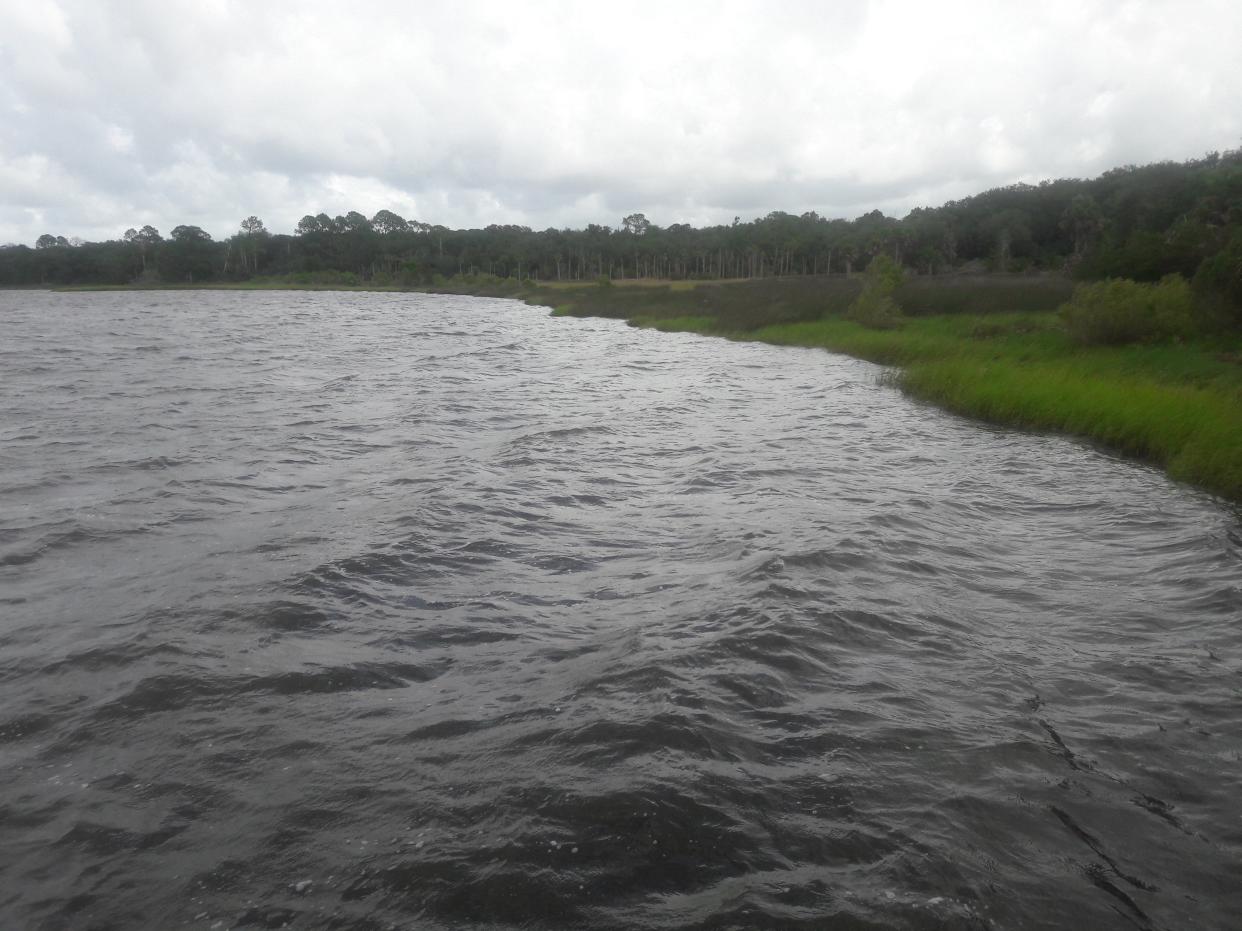Serene sounds of a river: Not so down below

When we sit on the banks of the St. Johns River and watch it gently and quietly flow by, we don’t tend to think about how noisy it can be under that rippling surface. But place a hydrophone, essentially an underwater microphone, into the river, listen for a few minutes, and you will realize what a raucous and boisterous environment it really is. It is not as placid as it seems on the surface.
Of course, there are the anthropogenic sounds from boats and ships going by. Rain, breaking waves and construction activities such as dredging or pile driving also contribute to the background noise.
However, there is a chorus of other sounds too. Some can come a fair distance because water transmits sound better than air. Sound travels faster in water (1,500 meters per second) than in air (about 340 meters per second) because water is denser than air. Temperature also affects the speed of sound in that sound travels faster in warm water than in cold water.
Many people might expect to hear the clicks, pops and whistles of dolphins as they “talk” to their pods and family groups. They also will do tail slaps at the surface to not only communicate but also to stun fish for food too. Tail slaps can be very loud.
River Life: What can you do to help the St. Johns River? Read on, you may be surprised.
Vintage Times-Union: Do you take the St. Johns River for granted? After writing a book on it, he no longer does
Man-made clatter: For St. Johns River dolphins, it's a noisy, noisy world
Manatees also make sounds with squeaks, high squeaks, and squeals the most common. Manatees produce these sounds when playing, feeding, resting or mating. They appear to vary each call in relation to their situation or behavior.
But perhaps the most common sound you hear underwater comes from one of the smaller creatures: the snapping or pistol shrimp. This little shrimp-like creature has a modified claw that is capable of making a very loud pop or snap.
Snapping shrimp are not at all like the ones that people like to eat. They have one giant claw that gives them an uneven look compared to their other claw. Snapping shrimp produce a powerful, almost shock wave effect, by snapping their oversized claw. The resulting shockwave is used to both communicate with other shrimp and to feed by killing their prey. They may also use the sound to alert others in the area that they are there.
And while you might not associate oysters with sound, they too make a popping sound as they rapidly close their shells to help pump water. If you are ever where you can observe an oyster bed on a falling tide, watch for the squirt of water and listen for the sound.
As mentioned before, the river has quite a cacophony of sounds.

Glad you asked River Life
With the lack of submerged aquatic vegetation in parts of the St. Johns River, is it possible to replant them along the shoreline and provide a jump start to rejuvenate that habitat?
While it is possible, it is often not successful unless something has changed since the plants died out. In most cases, if submerged aquatic plants could grow there, they would be there already. Either the water quality, color, or depth caused the plants to die.
Replanting without improving those factors may be a wasted effort. The other challenge with reemerging plant growth is overgrazing by animals in the area. So trying to shield plants from being eaten may have to be done to protect the plants for a sustainable density for survival. So do your homework on the area you want to replant to try to increase your chance of success.
River Life runs the first Tuesday of each month in The Times-Union. Email Quinton White, executive director of Jacksonville University’s Marine Science Research Institute, with questions about our waterways at qwhite@ju.edu. For more on the MSRI, visit ju.edu/msri.
This article originally appeared on Florida Times-Union: Jacksonville rivers and others produce a cacophony of sounds below

